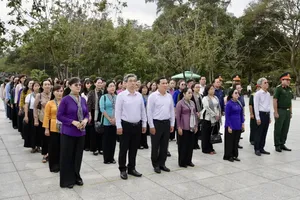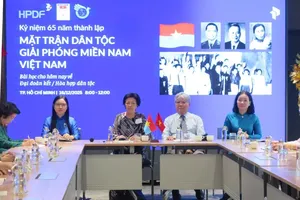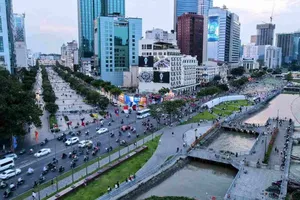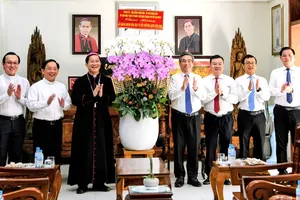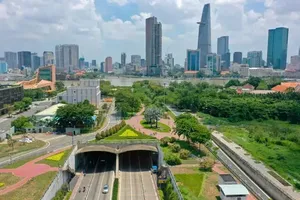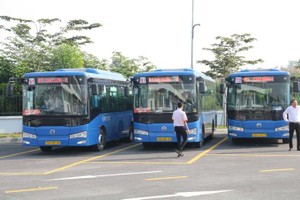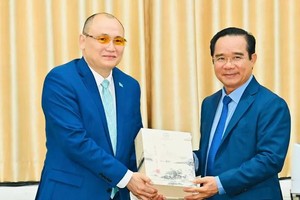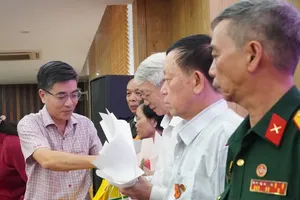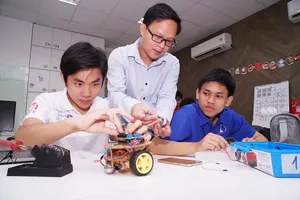
HCMC recently convened a consultative meeting to outline its socio-economic development direction for the 2026-2030 period. Previous forums, including the National Assembly’s one, high-level meetings, and academic conferences, have consistently focused on addressing challenges, bottlenecks, and seeking sustainable and comprehensive development solutions for HCMC.
Considered the national leading role in economy, HCMC is highly susceptible to global economic fluctuations and faces numerous risks and challenges stemming from international economic developments. Despite implementing timely and effective policies, the city has encountered limitations within its legal framework for effective management and development.
As HCMC now needs a shift in mindset, leadership, and management approaches to meet the demands of the evolving context, it is necessary to innovate models, enhance growth quality, and modernize planning and socioeconomic development organization for sustainable growth.
However, there is a discernible lag in the transformation of mindsets and operational methods, sometimes leading to localized conflicts, particularly within the urban governance structure. In addition to that are legal and jurisdictional conflicts, as well as resource allocation challenges, which remain unresolved.
While there has been significant attention to mechanisms and policies, coupled with robust transformations in the organization and operations of HCMC's government, the policy space and administrative procedures have yet to fully meet the demands of comprehensive and synchronized renewal in order to become a critical resource to complement other resources in driving HCMC's sustainable development.
As Dr. Tran Du Lich, a member of the National Monetary Policy Advisory Council, has observed, HCMC cannot progress by adhering to outdated paradigms. A more synchronized and decisive transformation, with a different approach, is required for the city's holistic development.
Given HCMC's missions, objectives, and role, it is essential to redefine its institutional framework, governance policies, and development organization. Moreover, mindsets and operational methods must be modernized and made more practical.
Perhaps HCMC should be viewed as a pioneer in piloting new mechanisms and policies for the entire country. This role necessitates that HCMC make breakthroughs in innovating growth models, actively creating and shaping new markets, and leveraging contemporary opportunities for development while leading the nation toward the future.
From this perspective, HCMC should receive differentiated attention and investment, departing from the conventional approach of treating it as a province or centrally-governed city.
Specifically, it is critical to provide HCMC with a more conducive and comprehensive legal framework, safeguarding the fundamental rights of the city's government and residents in urban development and resource mobilization.
Furthermore, the city's authorities should be empowered to enact and implement mechanisms, policies, and management models to effectively govern and develop the urban area.
It is time to enact a comprehensive law (Ho Chi Minh City Urban Law) to integrate existing development mechanisms and policies with new ones, thereby creating a robust legal framework. An endogenous mechanism should be established to supplement and refine these mechanisms and policies, leveraging the proactiveness and creativity of the city's Party Committee, leaders, and dwellers in urban governance and development.
The city's public service apparatus must also undertake new missions and responsibilities, demanding that each official possess appropriate qualities, competencies, and operational skills. This necessitates a synchronized transformation of the organizational structure, workforce development, and standardization of operational methods across the entire system.
The implementation of development planning must be aligned with urban spatial development. Prioritizing and decisively implementing solutions to innovate models and enhance quality, with a focus on the city's advantages in terms of its central location and high-quality human resources, while ensuring market connectivity, is crucial.
HCMC should have dedicated mechanisms, resources (separate funds), and robust solutions to invest in and support investments in emerging sectors with high-risk potential.
HCMC contributes approximately one-quarter of the national budget revenue and about one-fifth of the country's GDP growth, but these ratios have been declining in recent decades. Notably, following the Covid-19 pandemic, the city's economic growth rate has not met expectations, dampening the recovery and growth momentum of the national economy.
Compared to the top 25 cities in Asia, HCMC's competitiveness is ranked among the lowest, at the 15th position. While the city's economic scale is moderate, its development level is low, and numerous issues and challenges threaten the sustainability of its development.
